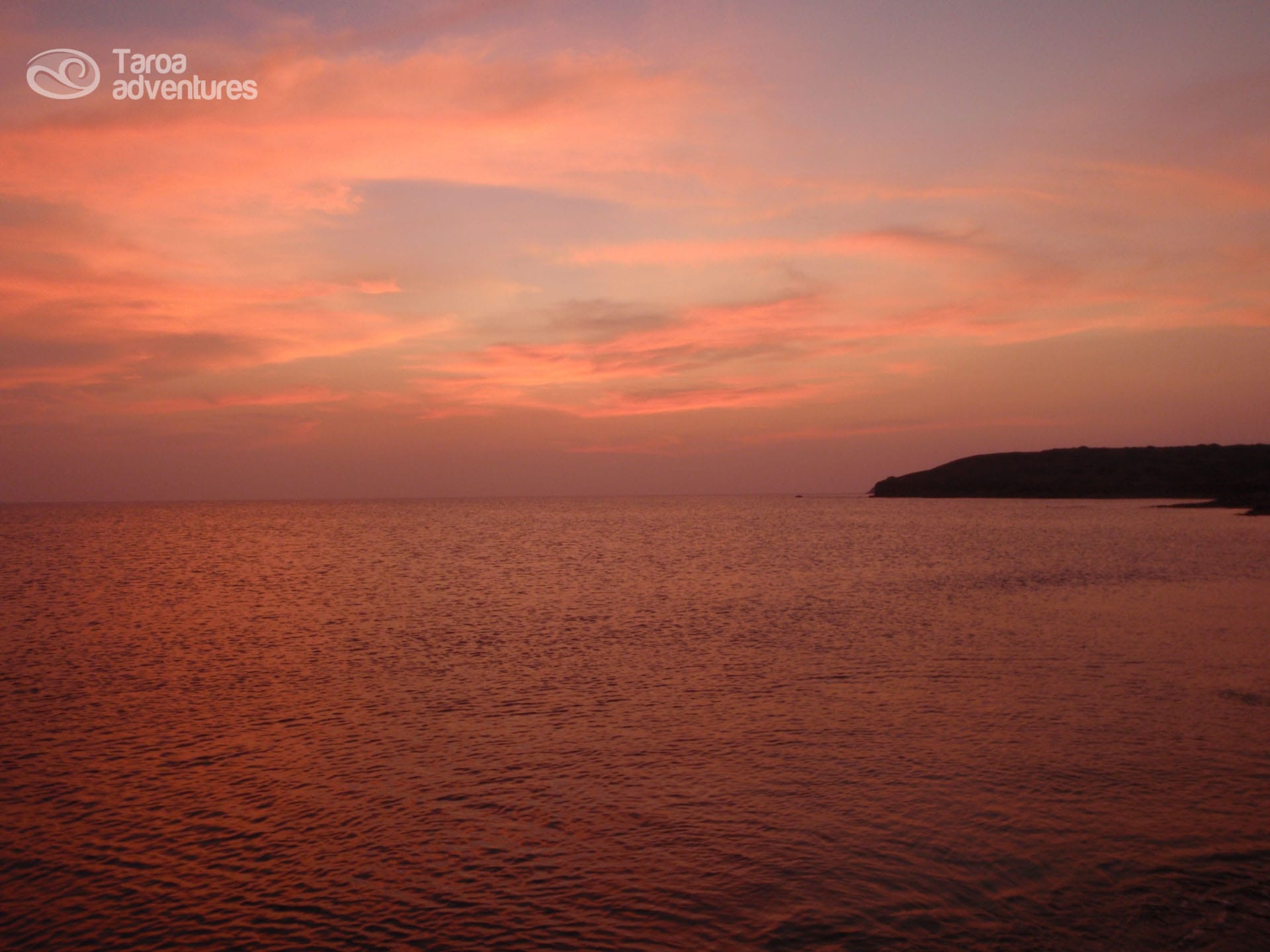Colombia
The geographic location of Colombia was a corridor of populations between Mesoamerica, the Caribbean sea, the Andes and the Amazon. In Puerto Hormiga (Bolívar) have found traces of the archaic period, including the oldest pottery remains have been found in America, dating back to 3000 BC, a period in which the corn crop begins on a small scale in the cundiboyacense region. In the Colombian territory also found significant traces of cultures that lived during the formative period, whose earliest dates correspond roughly 1,500 a year. B.C.. San Agustin and Tierradentro cultures are highlighted. This period extends from about 1.400 B.C. until the arrival of the spanish conquerors in the XVI century.
By the XVI century, The three major and dominant language families in the territory of present Colombia were the Arawak, Caribs and Chibchas in various stages of the formative period. Two Chibcha groups (the Tayrona and Muisca) are highlighted in the upper formativo.
Other pre-Colombian cultures that stand in the formative period are Tumaco, Calima, Nariño, Tolima, Quimbaya and Urabá.
In 1.499 the Spanish explorer Alonso de Ojeda arrived on the coast of northern Colombia (Cabo de la Vela) accompanied by Amerigo Vespucci. In 1.501 Rodrigo de Bastidas crossed the coast between Cartagena and La Guajira and discovered the Magdalena River.
The first Colombian cities were founded in 1.509 or 1.510 in the Urabá and Darien regions. These early settlements did not prospered as a city but still exist many of these municipalities. Santa Marta, the oldest city in Colombia, was founded in 1.525 by Rodrigo de Bastidas.
The strategic position of Cartagena de Indias, the main slave market of South America, made ??the city was coveted by English pirates who tried to take it regularly. Forts were built and Cartagena became the best protege port. In his walled historic center is preserved with important civil and religious buildings, treasures which was declared a World Heritage Site.
Throughout the Colombian geography, there are scattered villages and towns that recall the importance of the foundations of the colonial period and keep priceless architectural treasures such as Pamplona in Norte de Santander, Girón and Barichara in Santander, Villa de Leyva in Boyaca and Santa Fe de Antioquia near Medellin
The mixture of races has made to the country and the world cultural expressions of great value in the fields of music, visual arts and literature.
Colombia is strategically positioned , considering that the country is joining the American continent also bathes the coasts of the Pacific and Atlantic oceans. The Andes mountain system crosses the country from north to south.
Among the geographical wonders has the highest peak in the world near the coast, the river of 7 colors, a large natural park in its waters, the world’s largest Amazon jungle, snow line, the coral islands of the country, the largest moorland of the world
Recognized worldwide for its excellent coffee, flowers and authenticity of its emeralds, Colombia is the country music, history, nature and ancient traditions still preserved, is also the land of magic realism of Macondo, rising in the Caribbean region where cumbia dancing, eating fried fish, coconut rice and fried plantains, plus seconds you can live in sea and mountain experiences, always surrounded by nature and happy people enjoying their dances and lyrics.
It is an equatorial country whose climatic variations are determined by The trade winds, humidity and essentially by altitude. The proximity of Colombia to the eautor means that its temperature varies little throughout the year
There are two rain seasons, from April to June and from September to December and two dry seasons. The country enjoys a constant luminosity throughout the year, with an equal number of daylight and night time, so that there are no months with summer time.
- Communications: Country code +57.
- Local time: GMT-5H.
- Currency: Colombian Peso ($) (COP).
- Electricity: Electric power is 110-120 Volts / 60Hz (same as the US and Canada). The shots are American type, with two flat pins.
- We are one of the kindest countries in the world.
- We are the second most biodiverse country in the world.
- We have 84 Pre-Colombian cultures.
- We have the largest marine reserve of the Biosphere on the planet.
- With 20% of the world’s bird species, we are the country with the largest number of species in the world.
- UNESCO has declared 7 sites in Colombia as a World Heritage Sites
- We are the only country in South America with two oceans.
- We have three Andean mountain ranges
- We have the best coffee in the world.
- We have the Sierra Nevada de Santa Marta, the highest coastal mountain range in the world.
- We have Caño Cristales, the most beautiful river in the world.
- We have the third longest barrier reef in the world.
- We are the region with the largest number of Natural Parks in Colombia.
- We have all the thermal floors and therefore all the climates of the planet.
- We have the Sierra Nevada de Santa Marta, the highest coastal mountain range in the world.
- We have Ciudad Perdida, the sacred city of Tayrona culture, one of the most spiritual cultures in America.
- We have the third longest coral barrier in the world.
- We have Cartagena de Indias the most beautiful city in Colombia and one of the most beautiful cities in Latin America.
- We have in La Guajira the largest desert in Colombia.
- We have a sea of 7 colors.
- We have Punta Gallinas, the northernmost point of South America.
- We have Palenque, the first free town in America.
- Because we have islands, coasts, mountains, Paramos, rain forest, mangrove forest, savannahs, coral reefs and desert.

